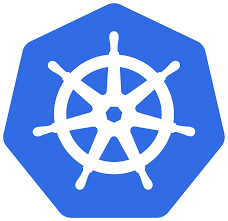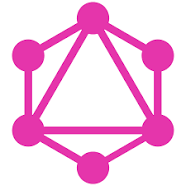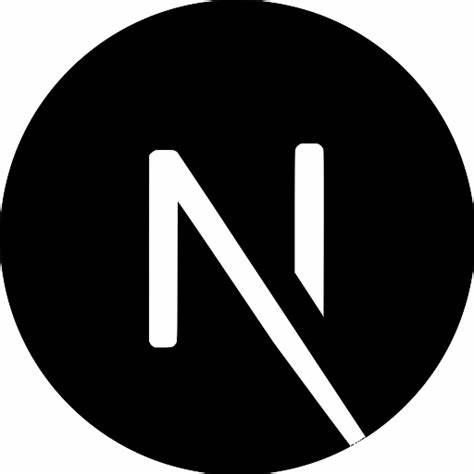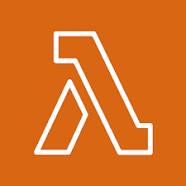
Gaurav haral
- Role
Sr. Full Stack Engineer
- Years of Experience
4 years
Skillsets
- TypeScript
- Unit Testing
- React Js
- NoSQL
- Node Js
- Next Js
- MySQL
- GraphQL APIs
- Express Js
- Ci/Cd Pipelines
- Redux
- Storyblok
- Scaled Agile Framework
- MongoDB
- Material-UI
- AWS Lambda
- Restful APIs
- Python
- Kubernetes
Vetted For
- Roles & Skills
- Results
- Details
- CMS Web Developer (Remote)AI Screening
- 52%
- Skills assessed :CI/CD, CMS plugins, React / NextJS, SCSS/Tailwind, Storyblok, Git, Node Js, Type Script, Wordpress
- Score: 47/90
Professional Summary
- Jan, 2023 - Nov, 2023 10 months
Sr. Full Stack Engineer
Sanda Office Management services Pvt Ltd - May, 2022 - Feb, 2023 8 months
Jr. MERN Stack Developer
Medtigo India - Sep, 2020 - Apr, 20221 yr 7 months
Jr. MERN Stack Developer
Remunance MERN Stack
Freelancer (Bright-InTech)
Applications & Tools Known

Python

Nodejs

SQL

HTML

CSS

Material-UI

Expressjs

PostgreSQL

Kubernetes

MongoDB

GraphQL

Next.js

Cypress

AWS Lambda

Netlify

Cloudinary
Work History
Sr. Full Stack Engineer
Sanda Office Management services Pvt LtdJr. MERN Stack Developer
Medtigo IndiaJr. MERN Stack Developer
RemunanceMERN Stack
Freelancer (Bright-InTech)Major Projects
MERN--Courier System
MERN -- Market Details
MERN-- Agro
Medtigo Admin
Education
HSC
State BoardB.E (Information Technology)
Savitribai Phule Pune University (2019)
AI-interview Questions & Answers
Hey. Hi. I'm Doro. I have working in industry over 3.5 years in web application development. I have bachelor's degree in computer science engineering, which has enabled me to design and develop complex software systems. And I'm always eager to take new challenges that push my boundaries that push the boundaries of my skills. I'm always eager to learn new things. Uh, in my current role, I have experienced, uh, different technologies such as React, Node, and some of the CMS tool, like a story block. And I have knowledge of version control systems, like data and data. I'm looking forward, you know, word of web application development.
So we're maintaining updating the plug ins by myself. Like, they're having the options for edit like, first of all, doing any using any plug in. We need to check the brief, you know, in in in about the plug in so that we know the knowledge. Again, the proper idea what the plug in do is what we can do. And here, like, if you want some of the changes already in plug in, so we can able to do that. Yeah. We for that, we do some code that that makes the using that, we can update the plug in. And, like, if you want to add some functionality order, we can add while doing that.
So, yeah, like, in store block, I was just recently finished one project called Davis International. But, like, the first job but using the CMS, it is for using the CMS like a Storyblok, it is really helpful, which is, like, by using that with like, if you use some similar components for this, so it is, like, very simple to to create new pages, new routes over there. And using that, it like, we need to do a lay score, which is more capable to to, like, to update the new new components like that. And, like, with the with the story block, we can do we can do the story block with the multi languages. Like, we have having the option for translate. And by installing the languages, outside can be in a 2 different languages. We need to make some code so it will be capable to doing the those thing with React.
So as of now, as I'm working with the story block and the ReactCS, so by using that, I use a git and gator for, like, maintaining our code. And, like, as of now, I didn't contribute my any goal with the CMS code base. But as I check, the community goals, which really helps me to build new project using, like, a story block with red. Like, I'm new with that and having this opportunity to create a new project. So I learn new things. I just I I use my problem solving skill that by using that, I'm able to complete those thing. And, like no. I didn't work, like, with the I'll tell you what the CMS.
So yeah. So, yeah, I work with the React and Next. Js both with the same CMS tool called Storybloq. So, like, as we we know, we just show everything through API, which will need to be integrated in our our actual code, which is from the React or Next. Js or anything. So at the time of integrating those thing, we need our components or our code need to be capable to to work, like, multiple things we can do, something like that. So for that, we need to define some the ball the blocks, which is from the story box, which which gives us the name of the components, and we need to define our components in our main folder structure where we call our API's thing and all the thing and passing our children's. So there, we can just simply add those thing. And by doing some basic configuration, like a component and installing all packages and some implementing all of packages. Just using that, uh, it is very simple. Like, if we build some component, you can use the component at any page, everywhere in website. So yeah. So having, like, great experience with the CMS with using Next. Js and React. Like, in Next. Js, I use the TypeScript also where we can just like, defining code, we don't get any error. Like, we we get error, but we are our code is and we both fill our code in a way that we didn't get any error, any bugs after deployment.
I'm familiar with the service. So, yeah, I'm really familiar with the storyblob.com. We are, like, we're having 3 types of like, in our organization, we're having the partner portal option where we can just do our some testing works. We can try new new things. And, like, using story block is really a very good experience for me. Like, first of all, I'm having, like, basic knowledge of the story block. As as soon as I they started working on the story block, I like the story block. You know? In, like, in story block, we're having the option to install the plug ins. Well, like, I use them mostly the one to to opt the plug ins. The first one is for the, uh, record the maintain maintain the things. Like, we can having the backup of our 4 components. And the second one is, uh, our translation thing. If you want we need our site need to be in 2, 3 multiple language international languages, that will be forwarded by the Sugarlo. Just by reviewing the option of translation and installing the plug in and do some basic configuration, we can use that. And on our side, it will be, like, we're having the different language for different region. Isn't that and, like, in Shopify, we're having the option of the database. Like, if we need need to add some some data which is from the third party, so we can just directly put the API and we are able to access them. Those data, like, we don't need for the tags. Like, your tags will be coming from the 3rd party, which is a lot of, like, so the store will maintain that by own these tags and giving us a appropriate data. And, like, should we work in the CMS tool, headless CMS, where we're having the the details through the APIs? We don't have, like, infrastructure. Uh, in at the time of building the story block, we need if we use some local configuration, we need a SSL certificate. So we need to add the proxy for that. So yeah.
This is data more more complex. So, uh, as my previous experience, I I have build 1 of the complex 2 of the complex website where which will be the building of the website will be start will be takes almost 5 years, where it contains a hospital management system, where we're having some admin portal, some user portal, like, the difference between those. Yeah. Like, in admin portal, we are hospitals and all those things and manage all this data. Like, we should be, like for that, we use a back end technology called Node. Js and the database SQL. For the front end, we use React. Js only. So, like, and, like, at the time of building the project, I was new in our organization, new in our with application development. So I learned a lot of things. I learned how we can manage the third party library, how we can manage the the the data that will be provided in our plug in, how we can modify our modules, and if if some of the things are not possible, how we can ensure, like, how we can resolve the the problem. And at the time of building those project, I'll I I improve my problem through the scale. So if we get any issue with the React, I am the one who, like yeah. We can do that. Like, it might be sometimes taking for different it might be sometimes take a time. But as of we as of building as of learning my problem solving skill, developing my problem solving skill, I have used to it, and I can able to fix the issue where, like, in the the big project, I'm not the only one developer who who are working with this. We're having the a senior also, like, the management team also with that. So, yeah, like, we we just see around some of some of the issues that will be fixed by me.
Right. To expose the field, please explain what is to or magnify things in the that that can be optimized. So behind the first we define the used in the data, so data and the default value is not in the useEffect. We're having the async function, page data, of course, then we use our like, async comes with the way dynamic await and paste our data, then we have resulted in the JSON and we are resulting our data and, like, we are in the first data. So as of now, as I'm doing, professor, instead of the like, instead of adding our function in the user state, we can use it outside. And in user user state, we can call our function. So we're having all the data. And, like, instead of passing useState as null, default as null, we can pass our error. So, like, as in the response in video, send your response in JSON. And we so, like, the empty error, it is a good thing. And we stop into the calling function, the writing function, and use it. We can write our function outside the edge effect and call it into the each effect. It is better. And then everything is, like, we use a simple way to get to good idea. Like, we restore data to the premises, and then, like, we're having the fetch. Okay. Okay. We're having issues with this one. Okay. Okay. Then having the fetch. Okay. No. Like, here, we need to add dot 10, the meter, then we'll just see our data, like, the page, then hang the APIs. Then we need to define a 10, then then to where we'll issue all all the data. And in then after that, like, if we're having issues with the API, we need to add our cache block also. So we we need to add our catch block things over there. And then in in, like, in only the then block, we can define our result instead of defining into the this 1st dot JSON. And something like that, we can we can, like, optimize or we can correct this call.
Like, uh, for, like, third party applications, third party issues, uh, we use for lazily lower like, this one. Our component having the more data, like, for like, I use some lazy keyword over there. And using that, we can ensure that the the size and some other things by rendering things. So, like, if you add lazy loading, then I'll complain with load. But it doesn't affect for the entire site. We just instead of the affecting entire site, it just affect for the component. If we're having, like it it shows the loader or the for the lazy loading. So if it takes time, it doesn't make any issue with the site. And, like, we can check after that why it is taking so much so long, and we can try to resolve the thing. We can make our code cap able to do the things.
What was this? What was it used to determine table catching strategy for hardtop images. So to follow the one, our now Next. Js, we can build our Next. Js, you know, capable, like, we'll make the queries the most suitable. As of now, the Next. Js is the website application. So not, like, too much work we need to. But with the story block, we can add some of the configuration that helps to determine suitable catches. So yeah. And, like, in React JS, we can store our store catches so so that, like, if you load any component, first of all, it store it only takes time to the first time uploading the question. After that, uh, after that, if we refresh our page, then we're having our catches, in a dot dot next file. So we're having, like, a would it does doesn't take that much time to load if you're having the higher traffic on a site. And unlike, uh, in Storyblock, the Storyblok already manage their high traffic management system. We need to only do it with our core in Next. Js.
What kind of situation will you take to into account for integration for design? So, like, a third party for the like, we need other party things or in module things in module things, like, if we go with the our NPM site, we'll be having all the information about the module, how the like, it is safe or not, or how much downloads we have over there. So everything we just show in an in a in a in a in a site. So using that, the first of all, we need to check the things. Then if it is okay, then we'll just need to install the one. And, uh, the installation, we can do some configuration as per the plug in required, like, for securing out the AppSecure interface. Something, like, we can do, like, when integrating third party application, sign in services in Next. Js. So sign in services, we need to define our, uh, APIs and they'll we need to check the configuration that will be make it secure by TypeScript Intermediates.